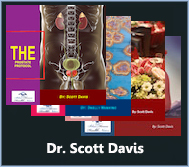 I used to have migraines every 10 or 12 days. I now haven’t had one for 14 months. I’m not expecting one ever again. Let me tell you how it all happened for me. And let’s see if it can be the same for you too.
I used to have migraines every 10 or 12 days. I now haven’t had one for 14 months. I’m not expecting one ever again. Let me tell you how it all happened for me. And let’s see if it can be the same for you too.
Click to see more detail on Video
What is the fastest way to get rid of a migraine?
The fastest way to get rid of a migraine typically involves a combination of acute treatments to alleviate symptoms and lifestyle strategies to help manage the attack. Here are some steps you can take to try to alleviate a migraine quickly:
- Take medication: If you have migraine-specific medication prescribed by your healthcare provider, such as triptans or other acute migraine treatments, take it as soon as possible after noticing the early signs of a migraine. These medications work best when taken early in the migraine attack and may help alleviate symptoms or reduce the severity of the headache.
- Rest in a quiet, dark room: Find a quiet, dark room where you can lie down and rest in a comfortable position. Avoid bright lights, loud noises, and strong smells, as these can exacerbate migraine symptoms.
- Apply cold or heat: Apply a cold compress or ice pack to the forehead, temples, or back of the neck to help alleviate migraine pain. Some individuals find relief from applying a warm compress or heating pad to tense or sore muscles.
- Stay hydrated: Drink plenty of water to stay hydrated, as dehydration can exacerbate migraine symptoms. Avoid caffeinated and alcoholic beverages, as these can contribute to dehydration and trigger migraines in some individuals.
- Practice relaxation techniques: Engage in relaxation techniques such as deep breathing, progressive muscle relaxation, guided imagery, or meditation to help reduce stress and tension, which can exacerbate migraine symptoms.
- Massage or acupressure: Gentle massage or acupressure techniques applied to specific areas such as the temples, forehead, or neck may help alleviate migraine pain and tension.
- Avoid triggers: Identify and avoid potential triggers such as certain foods, hormonal fluctuations, stress, lack of sleep, or environmental factors that may contribute to migraines. Keeping a migraine diary can help you track triggers and patterns.
- Consider caffeine: For some individuals, a small amount of caffeine (such as a cup of coffee or tea) may help alleviate migraine symptoms, as caffeine can have vasoconstrictive effects and enhance the effectiveness of certain medications. However, caffeine should be used judiciously and avoided if it is a known trigger for your migraines.
If your migraine symptoms are severe, prolonged, or accompanied by other concerning symptoms such as neurological changes, difficulty speaking, vision changes, or confusion, it’s important to seek prompt medical attention. Your healthcare provider can help determine the underlying cause of your migraines and develop a personalized treatment plan to help alleviate symptoms and prevent future attacks.
What is the best treatment for migraines?
The best treatment for migraines often depends on several factors, including the frequency and severity of the migraines, individual preferences, and any underlying health conditions. Migraine treatment typically involves a combination of acute (abortive) and preventive (prophylactic) strategies to alleviate symptoms and reduce the frequency and severity of migraine attacks. Here are some common treatment options for migraines:
- Acute medications: These medications are taken at the onset of a migraine attack to alleviate symptoms and abort the headache. Common acute medications for migraines include:
- Triptans: These medications, such as sumatriptan, rizatriptan, and eletriptan, work by constricting blood vessels and blocking pain pathways in the brain.
- NSAIDs (nonsteroidal anti-inflammatory drugs): Over-the-counter NSAIDs like ibuprofen, naproxen, and aspirin can help reduce migraine pain and inflammation.
- Analgesics: Medications such as acetaminophen (paracetamol) may provide relief for mild to moderate migraine pain.
- Anti-nausea medications: Nausea and vomiting are common symptoms of migraines. Medications such as metoclopramide or prochlorperazine can help alleviate nausea and vomiting associated with migraines.
- Ergotamine derivatives: These medications, such as dihydroergotamine (DHE), are sometimes used for migraines that do not respond to other treatments. They work by constricting blood vessels in the brain.
- CGRP monoclonal antibodies: These newer medications, such as erenumab, fremanezumab, and galcanezumab, are used for preventive treatment of migraines. They target calcitonin gene-related peptide (CGRP), a protein involved in migraine attacks, and help reduce the frequency and severity of migraines.
- Botulinum toxin (Botox) injections: Botulinum toxin injections are used for preventive treatment of chronic migraines (15 or more headache days per month). Botox injections are typically administered every 12 weeks by a healthcare provider.
- Lifestyle modifications: Lifestyle changes can help reduce migraine triggers and improve overall well-being. Strategies may include:
- Identifying and avoiding migraine triggers such as certain foods, stress, lack of sleep, or environmental factors.
- Establishing a regular sleep schedule and practicing good sleep hygiene.
- Managing stress through relaxation techniques, exercise, and mindfulness practices.
- Maintaining a healthy diet and staying hydrated.
- Biofeedback and relaxation techniques: These therapies teach individuals to control physiological responses to stress and pain through relaxation techniques, breathing exercises, and mindfulness practices.
- Alternative therapies: Some individuals find relief from migraines through complementary and alternative therapies such as acupuncture, massage therapy, chiropractic care, herbal supplements, or dietary supplements like magnesium or riboflavin (vitamin B2). However, the effectiveness of these therapies for migraines varies, and more research is needed to establish their efficacy.
It’s important to work closely with a healthcare provider to develop a personalized treatment plan tailored to your individual needs and preferences. Your healthcare provider can help determine the most appropriate treatment options based on your migraine symptoms, medical history, and treatment goals. If you experience frequent or severe migraines, it’s important to seek medical attention for proper evaluation, diagnosis, and management.
How do you deal with migraine pain?
Dealing with migraine pain can be challenging, but there are several strategies you can try to help alleviate symptoms and cope with the discomfort. Here are some tips for managing migraine pain:
- Rest in a quiet, dark room: Find a comfortable and quiet space where you can lie down and rest during a migraine attack. Dim the lights or use an eye mask to block out light, as sensitivity to light (photophobia) is common during migraines.
- Apply cold or heat: Apply a cold compress or ice pack to the forehead, temples, or back of the neck to help alleviate migraine pain. Some individuals find relief from applying a warm compress or heating pad to tense or sore muscles.
- Try relaxation techniques: Engage in relaxation techniques such as deep breathing, progressive muscle relaxation, guided imagery, or meditation to help reduce stress and tension, which can exacerbate migraine symptoms. These techniques can also promote relaxation and help distract from the pain.
- Use over-the-counter pain relievers: Over-the-counter medications such as ibuprofen, naproxen, or aspirin can help reduce migraine pain and inflammation. Follow the recommended dosage instructions and consult with a healthcare provider if you have any questions or concerns about medication use.
- Stay hydrated: Drink plenty of water to stay hydrated, as dehydration can exacerbate migraine symptoms. Avoid caffeinated and alcoholic beverages, as these can contribute to dehydration and trigger migraines in some individuals.
- Consider caffeine: For some individuals, a small amount of caffeine (such as a cup of coffee or tea) may help alleviate migraine symptoms, as caffeine can have vasoconstrictive effects and enhance the effectiveness of certain medications. However, caffeine should be used judiciously and avoided if it is a known trigger for your migraines.
- Use distraction: Engage in activities that can help distract from the pain, such as listening to soothing music, watching a movie or TV show, reading a book, or engaging in a hobby. Distraction techniques can help shift focus away from the pain and promote relaxation.
- Seek support: Reach out to friends, family members, or support groups for emotional support and encouragement during migraine attacks. Talking to others who understand what you’re going through can provide comfort and reassurance.
- Consider complementary therapies: Some individuals find relief from migraines through complementary and alternative therapies such as acupuncture, massage therapy, chiropractic care, or biofeedback. These therapies can help promote relaxation and alleviate muscle tension associated with migraines.
- Consult with a healthcare provider: If you experience frequent or severe migraines, it’s important to consult with a healthcare provider for proper evaluation, diagnosis, and management. Your healthcare provider can help develop a personalized treatment plan tailored to your individual needs and preferences.
Remember that what works for one person may not work for another, so it may take some trial and error to find the most effective strategies for managing your migraine pain. Be patient with yourself and don’t hesitate to seek professional help if needed.
Why are migraines so painful?
Migraines are often characterized by intense, debilitating pain, but the exact cause of migraine pain is not fully understood. Migraines are believed to involve a complex interplay of genetic, neurological, vascular, and biochemical factors that contribute to the development of headache symptoms. Several theories have been proposed to explain why migraines are so painful:
- Trigeminovascular theory: One of the leading theories of migraine pain is the trigeminovascular theory, which suggests that migraine pain is primarily driven by activation of the trigeminal nerve system. The trigeminal nerve is a major pain pathway in the head and face, and it becomes sensitized and activated during migraine attacks. This activation leads to the release of inflammatory substances, neuropeptides, and neurotransmitters that cause pain and inflammation in the blood vessels and surrounding tissues.
- Neurological changes: Migraines are associated with abnormal neurological changes in the brain, including altered neuronal excitability, cortical spreading depression (a wave of neuronal depolarization followed by suppression of electrical activity), and dysfunction of pain processing pathways. These changes can amplify pain signals and contribute to the severity and duration of migraine pain.
- Vascular changes: While migraines were once thought to be primarily vascular in nature, it’s now understood that vascular changes alone cannot fully explain migraine pain. However, changes in blood flow and vascular tone may still play a role in triggering or exacerbating migraine attacks, particularly in certain subtypes of migraines such as migraine with aura.
- Inflammatory processes: Inflammatory processes within the brain and surrounding tissues have been implicated in migraine pathophysiology. Increased levels of inflammatory mediators, cytokines, and other immune molecules have been observed in individuals with migraines, suggesting a role for inflammation in the generation of migraine pain.
- Central sensitization: Migraine pain is associated with central sensitization, a process in which neurons in the central nervous system become hypersensitive to pain signals. Central sensitization can amplify pain perception and contribute to the persistence of migraine pain even after the initial trigger has subsided.
It’s important to note that migraine pain can vary widely among individuals and from one migraine episode to another. The intensity, duration, and location of migraine pain can differ, and some individuals may experience additional symptoms such as nausea, vomiting, sensitivity to light and sound, or aura. While the exact mechanisms underlying migraine pain are still being investigated, understanding the complex nature of migraines is crucial for developing effective treatments and improving quality of life for individuals affected by this condition.
 I used to have migraines every 10 or 12 days. I now haven’t had one for 14 months. I’m not expecting one ever again. Let me tell you how it all happened for me. And let’s see if it can be the same for you too.
I used to have migraines every 10 or 12 days. I now haven’t had one for 14 months. I’m not expecting one ever again. Let me tell you how it all happened for me. And let’s see if it can be the same for you too.
Click to see more detail on Video





